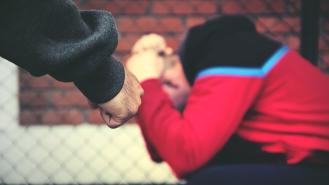Just 50 minutes after the attempted murder of PC Rathband, Moat taunted the police again. “Are you taking me serious now?...I’m going to destroy a few lives like you’ve destroyed mine...I tell you now I am absolutely not going to stop...you’re going to have to kill me.”
At some point before 2am Karl Ness, an accomplice in the crime spree, knocked on Andy's door to tell him that Moat wanted to see him. Andy tried again to convince Moat to hand himself in, but Moat took his phone instead and gave him pages and pages of his "innermost thoughts". He wanted the police, press and public to know his motivation:
Moat then headed for Northumbria and told the police he had two hostages. However, the hostages were his co-conspirators, Karl Ness and Qhuram Awan, the owner and driver of the black Lexus. The police warn the public that Moat is armed and should not be approached under any circumstances. Extra firearms officer from forces including Cleveland, Humberside, West and South Yorkshire and Cumbria were brought in to join the hunt. Furthermore, Northern Ireland sent 20 armoured cars and the Met police sent 40 armed officers. In total 19 police forces joined the hunt, making one of the biggest British police operations ever mounted.
Samantha came out of her critical condition and begs the father of her child to stop: “Please give yourself up. If you still loved me and our baby you would not be doing this.” But Moat went into a chip shop, threatened the staff and stole £100 at gunpoint. A letter from Moat, promising not to stop until he was dead, was released to the public.
The police found the black Lexus next to some industrial units on the edge of Rothburt, a quiet market town. The three fugitives had split up and Ness and Awan had walked on the main road away from Rothbury. They were tracked by a helicopter and disoriented by a stun grenade before armed police moved in to arrest them. Letters they had written to their families revealed they were willing accomplices rather than hostages.
Just after 11:00am, a two mile exclusion zone was set up in the Rothbury area and residents were advised to stay indoors. It's an area that Moat knows well from camping in his twenties, and he's hoping to lose himself in the dense woodlands, cliffs and undergrowth. Sniper units began combing the area.
The police found a campsite and a Dictaphone on which Moat had excused and justified his actions. He compared his situation to that of King Kong on top of the Empire State Building and to feeling like The Incredible Hulk. He also said the public, as much as the police, were now in his sights.
Press reports about him highlighted his disturbed personality: how he’d disciplined a child by making her stand in the street with a ‘naughty’ sign wearing a jesters hat; how he’d beaten a family pet to death in front of another child. Even his mother, Josephine, joins in his condemnation and said he was better off dead.
Moat wanted revenge on the reporters and threatened to kill one person for each 'inaccurate' report he heard. The press then agreed to report on the manhunt, rather than the man after hearing how precarious the situation was. His brother Angus tried to tell the media that Moat has had a breakdown, that his family hadn't abandoned him and that the killings were out of character. But the blackout was already in force and Moat never heard his sibling’s words of support.
On Wednesday, police offered £10,000 for information leading to Moat’s capture. An RAF Tornado jet equipped with heat seeking equipment circled in the sky. Thursday saw police agree to station officers outside schools. CCTV images showed Moat with his new Mohican hairstyle. Surprisingly, panic didn't grip the quiet, genteel, rural town and the police were able to focus on the manhunt, not on crowd control.
Survival expert and television star Ray Mears was brought in to help the search. He found tracks that potentially belonged to Moat.


